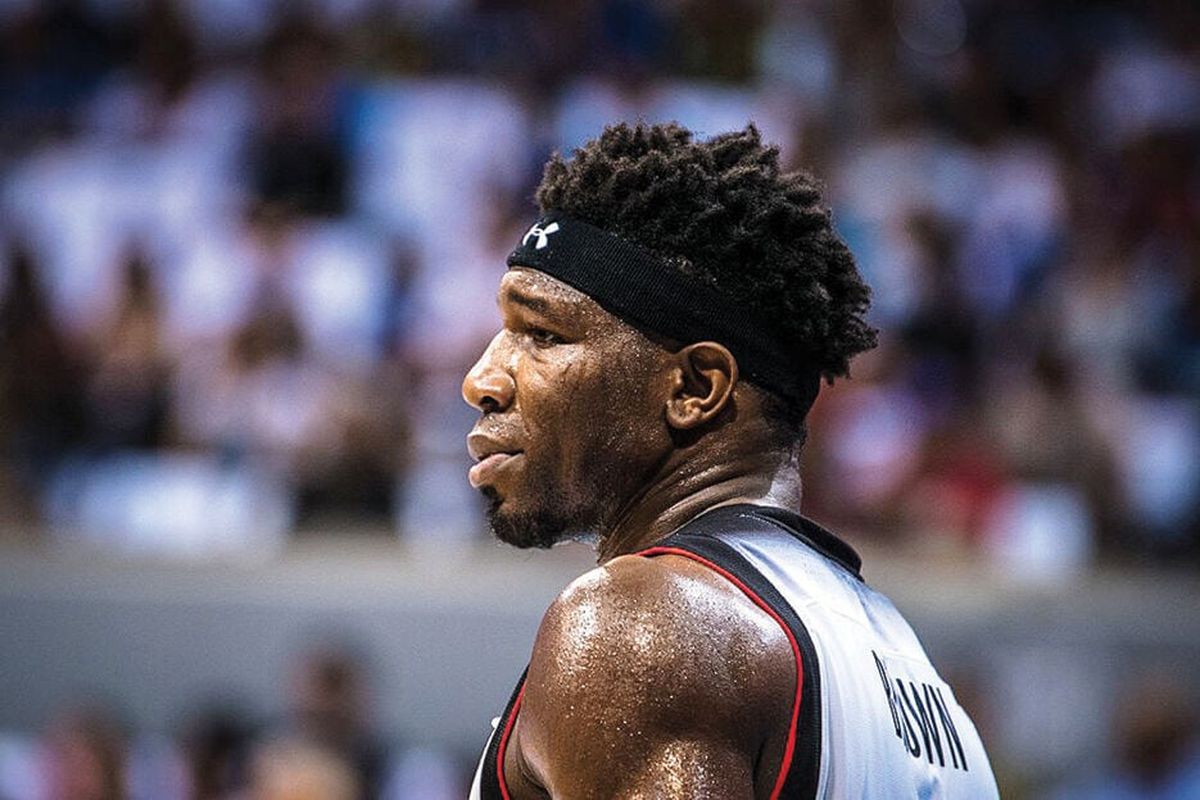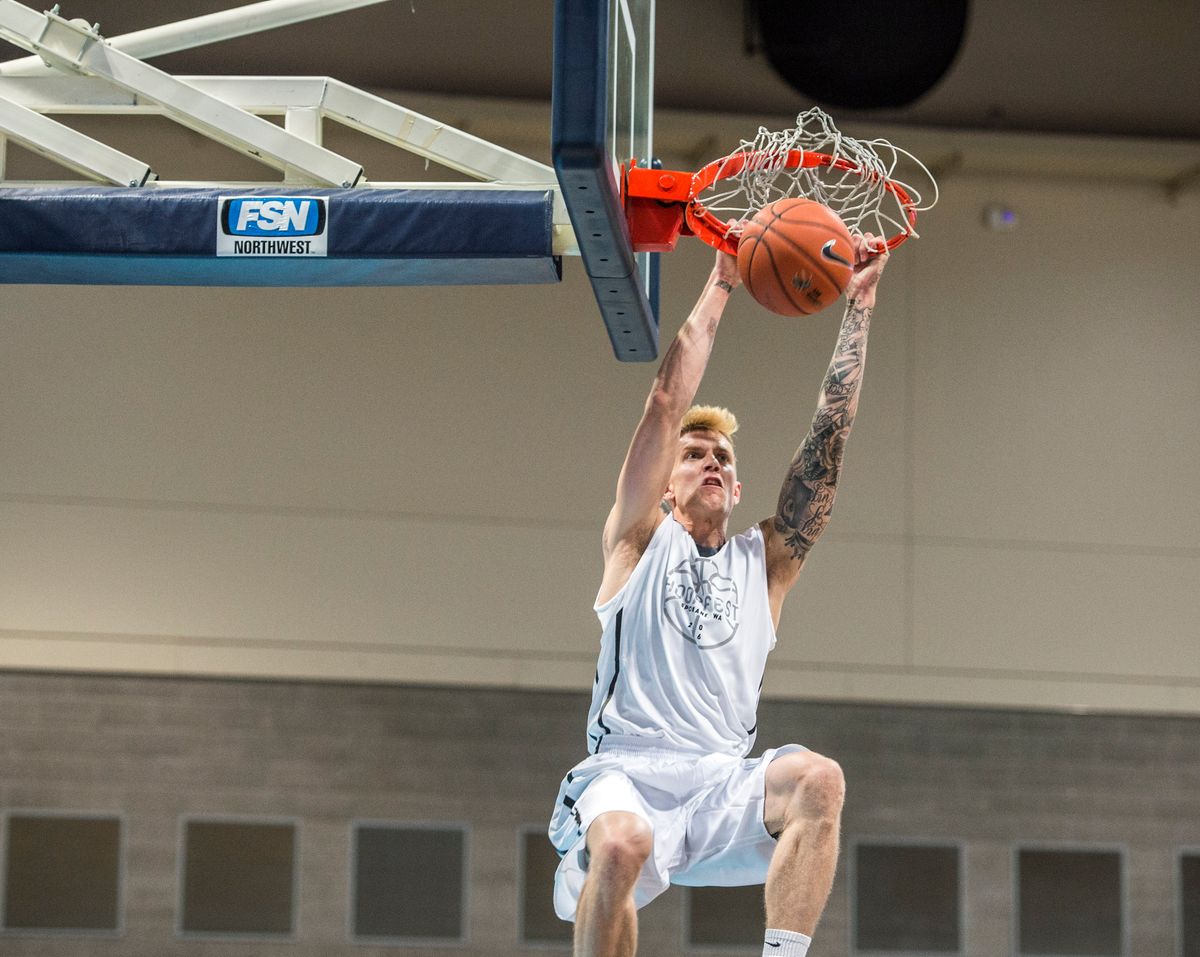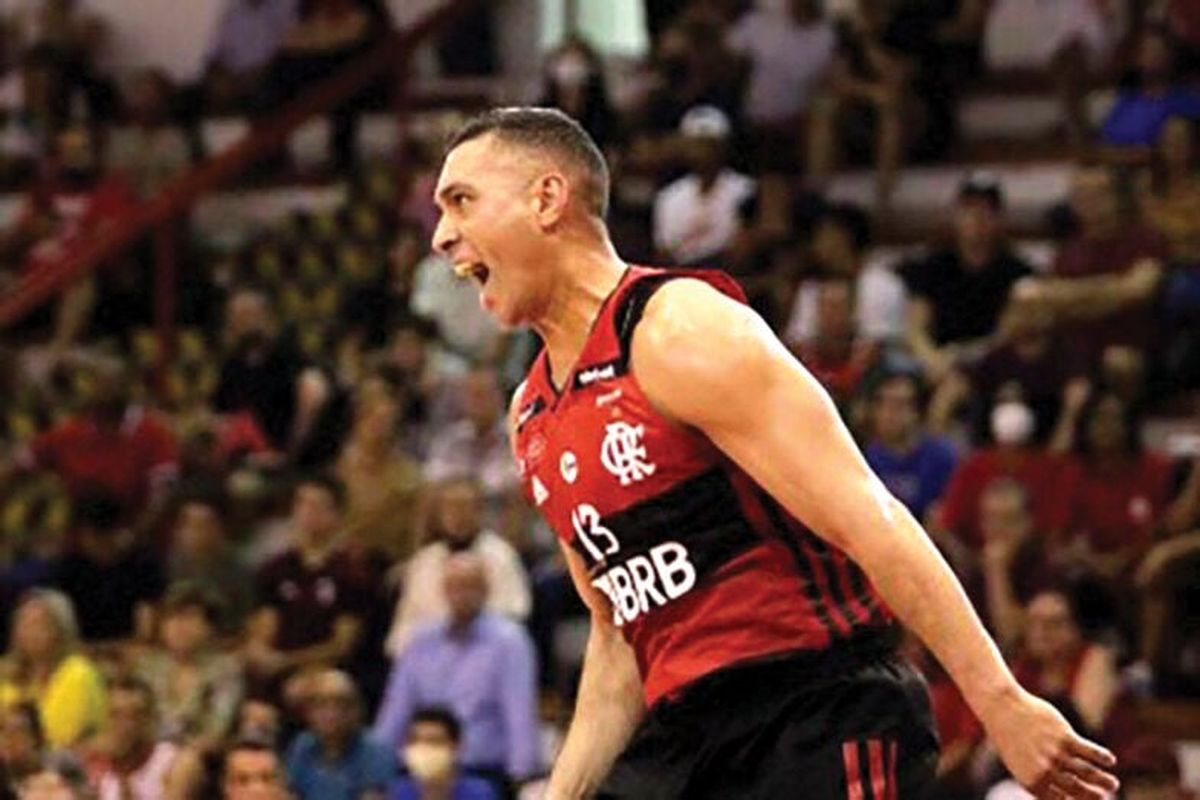Playing the long game: Older Bulldogs learn new training tricks to prolong pro careers
Micah Downs flushes in the first half of the Alumni Game in 2016. (DAN PELLE/The Spokesman-Review)Buy a print of this photo
They’ve traveled the globe playing professional basketball and, as the years have gone by, the reactions elicited from younger teammates are universally the same.
“We had a guy last year that was 41 because we needed another player, but other than that I’ve been the oldest player on the team,” said Ira Brown, a high-flying wing at Gonzaga in 2008-09 who still plays above the rim in Japan after turning 40 in August. “My teammates are always extremely surprised because I don’t look or play like my age.
“They’re just baffled that I’m 39 or 40. It’s the same way when I go back to the states (in the offseason), when I go back to rec league or LA Fitness. Nobody knows my age. I’m dunking on them, blocking shots and they’ll ask, ‘Where do you play?’ I tell them and I tell them my age.”
Micah Downs, who recently turned 36, weighs between 200 and 205, just a few pounds above his listed weight of 194 as a senior in Gonzaga’s 2009 media guide.
His body fat percentage is under 5.0 and there’s not a hint of excess weight on his lean, muscular 6-foot-8 frame in social media posts of his workouts. To put Downs’ body fat into context, the American Council on Exercise’s recommended range for male athletes is 6-13%. For a 35-year-old male, the Jackson & Pollock ideal percentage is 13.7.
Downs estimates some of his weightlifting numbers are three times higher than during his GU days.
“Sometimes you get guys, ‘Damn bro, you’re almost 40,’ said Downs, who has spent most of the last four seasons in Lisbon, Portugal. “They’re surprised where I get my energy. Honestly, you get energy the more active you are. This (younger) generation is a little different with social media and entertainment at the tips of their fingers. Guys have maybe become a little complacent.
“I wish I could have been like this back in high school. I try to give (younger teammates) encouragement and techniques.”
Brown and Downs are part of a healthy number of Zags playing – or played in the case of J.P. Batista, who retired at age 40 to become a grad assistant at his alma mater – deep into their 30s and even 40s at a high level.
Jeremy Pargo, 36, spent last season in Naples, Italy, and played for the U.S. AmeriCup team in September. He still plays hoops, but he’s also busy with a budding career as an actor. Abdullahi Kuso played well into his 30s before retiring a few years ago. Elias Harris, 33, is playing in Germany after averaging 17.5 points in Japan a year ago.
The former Zags have followed their own training paths, some sprinkled with drills they learned while at Gonzaga, to extend their careers. They share several similarities – rarely injured, never allowing themselves to get out of shape, generally eating right and training with a purpose.
Brown, Downs, Batista and 33-year-old Steven Gray, who retired this summer after 11 pro seasons, detailed the tenets of fitness routines that helped prolong their careers and compete against top international players.
“In the beginning, offseasons I really took time off and rested,” Batista said. “The last 10-12 years, there was no offseason for me. I saw the importance of coming to training camp in good shape and that really helped transitioning into game shape.”
Batista collected numerous individual and team awards during a career that included stops in France (eight years), his native Brazil (six) and Lithuania (two). He played for Brazil in the 2010 FIBA World Cup and was close to making Brazil’s national team for the 2016 Olympics in Rio de Janeiro.
“I tried to lift every day, the minimum was lifting and running,” said Batista, who averaged 19.3 points and 9.4 rebounds as a GU senior in 2006. “In Brazil, I didn’t have much access to basketball courts so it was mostly lifting and running. We had a house in front of the beach so I could run on the beach or on treadmills. I’d try to switch it up to stay motivated. A couple of summers I did crossfit.
“I always liked the weight room. Nutrition was key and not exaggerating the calories in the summer. In season, you can literally eat anything and it wasn’t going to affect you too much because you’re so active.”
Batista was in terrific shape for what turned out to be his final season, thanks to a summer running program organized by a friend/trainer. He was considering playing two or three more seasons before deciding to join Gonzaga’s staff.
The last time he wasn’t the oldest player on his team was when he was 35. Younger teammates occasionally needled him, but it was rare, partly because Batista is 6-9 and 270 pounds and “they knew I was never a lazy person. They couldn’t sleep because the old man was the first one in the gym and the last to leave.”
Downs has played in Croatia, Belgium, Spain, the NBA D League (now G League), Italy, Ukraine, Russia, France and Portugal with short stints in Venezuela and Germany. He’s not certain of his next destination, but he’s making sure his body will be ready for whatever comes next.
He’s picked up ideas from celebrity fitness trainers, via social media platforms and team strength and conditioning coaches. Downs pays attention to his food intake and has gone entire summers without eating fast food.
“I’ve always been really lean and I’m still lean,” Downs said. “My strength has gone through the roof.
“I didn’t really start lifting and working out in the gym until halfway through my pro career. I fell in love with the weight room physically and mentally. It’s a great way to escape a lot of crap and get a break from the difficulties of basketball. I can honestly eat anything and not really change my body, but I’ve noticed the older I get when I do eat crappy stuff, like a McDonald’s hamburger, I am a little sore the next day, I feel it in my joints.”
His offseason workouts are roughly 80 percent strength and conditioning. He doesn’t play much basketball because he knows he’ll get a ton of court time when he arrives at training camp. He called much of his training “prehab” to stay healthy throughout the season.
“It would be awesome to play until 40,” Downs said. “That might be a little bit of a stretch, but we’ll see how I hold up and what teams want to do. The market is tough now in the whole world.”
Brown has found a second home in Japan, where he’s played for over a decade and became a naturalized Japanese citizen. He was 25 years old when he suited up as a Zag for the first time, but he’d already established a healthy lifestyle from his time as a promising minor league baseball pitcher.
“In basketball or any sport, the older you see guys get, they stop working out or lose the desire to work out,” Brown said. “In turn, they lose some steps and a lot of strength. When I first got to Gonzaga, I remember always talking to (Gonzaga strength and conditioning coach) Travis Knight about J.P. being the strongest person there. I broke a lot of his records.
“A lot of stuff I did with Travis, core and pyramid type things, I still do. I’ve had pro training in weightlifting and cardio since I was 18.”
Brown credits vitamins, intermittent fasting, generally following a pescatarian diet and his training regimen for maintaining his sturdy, 6-4, 235-pound frame.
“It’s knowing how to be professional with my diet and understanding how my body works in terms of keeping it strong and balanced,” he said. “Whatever I put in my body is what I get out of my body. I do stretching, acupuncture, massage, hot tub, cold tub.
“A lot of athletes want to go home after practice and get on video games. I always stretch, get a massage and from there I take a nap.”
Gray wasn’t big on conditioning when he was a Zag – “I did the work, there wasn’t a whole lot of passion behind it” – but he become more diligent roughly six years ago.
“My teammates are like, ‘Steven is super healthy, gets to bed early and works out,’ but it wasn’t who I was for so long,” said Gray, who has run a couple of half-marathons. “The older I got, I knew that I needed to (make changes). I’m super into functional mobility, making sure my joints are moving how they should with a lot of impact protection and injury prevention.”
Gray isn’t the least bit surprised by the long, successful careers of Batista, Downs and Brown.
“Just because J.P. is so special, that’s the thing,” said Gray, who is in his first year as athletic director at Muckleshoot Tribal School in Auburn, Washington. “He’s been such a pro, even when he was at Gonzaga he carried himself as a pro. When I was in France and younger and playing against him, he was always a mentor to talk to. If there’s anyone that could play that long, it definitely would be him.”
Same goes for Downs.
“You’re talking about guys that are special, special people,” Gray said of his former teammate Downs. “Talk with anyone that played with him. Micah is probably one of the most talented individuals I’ve seen in my life. He can handle it, shoot it. The knock was always he was too skinny, but after college he’s just worked. He could really play until he’s 40.”
The work continues for Brown, who wants to play a few more years but he also has business interests – co-owner of Mod Pizza in Moscow, Idaho, and preparing to open a bar/lounge/restaurant in Osaka, Japan – and he purchased a 22-acre ranch in his home state of Texas.
“That (ranch) was my offseason workout, cutting down trees and building fences,” Brown laughed. “I can play longer (than a few more years), but I miss family and I missed a lot of years where my nephews and nieces have grown up. I’ve been blessed financially in my career and now I want my own family and kids.”



